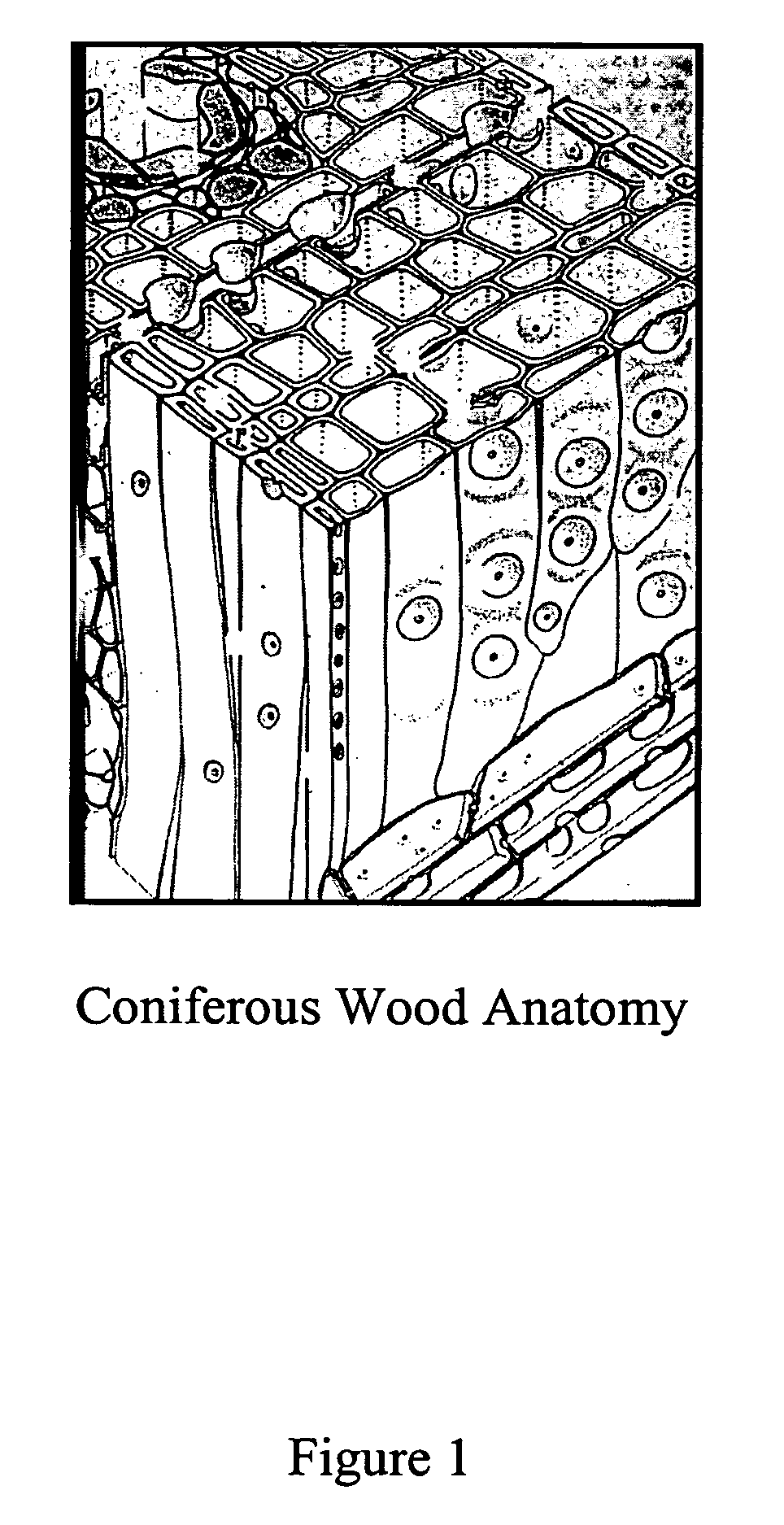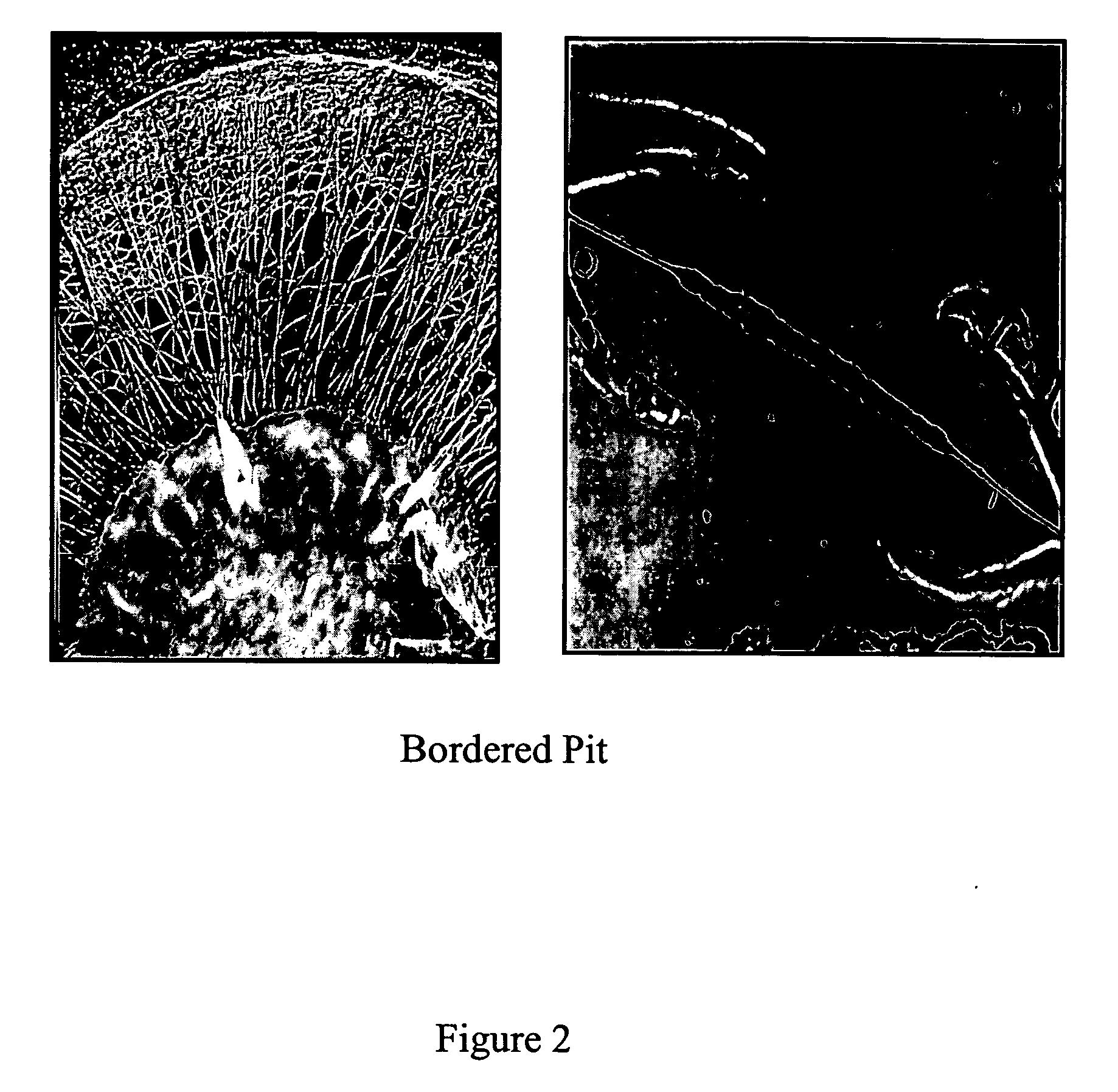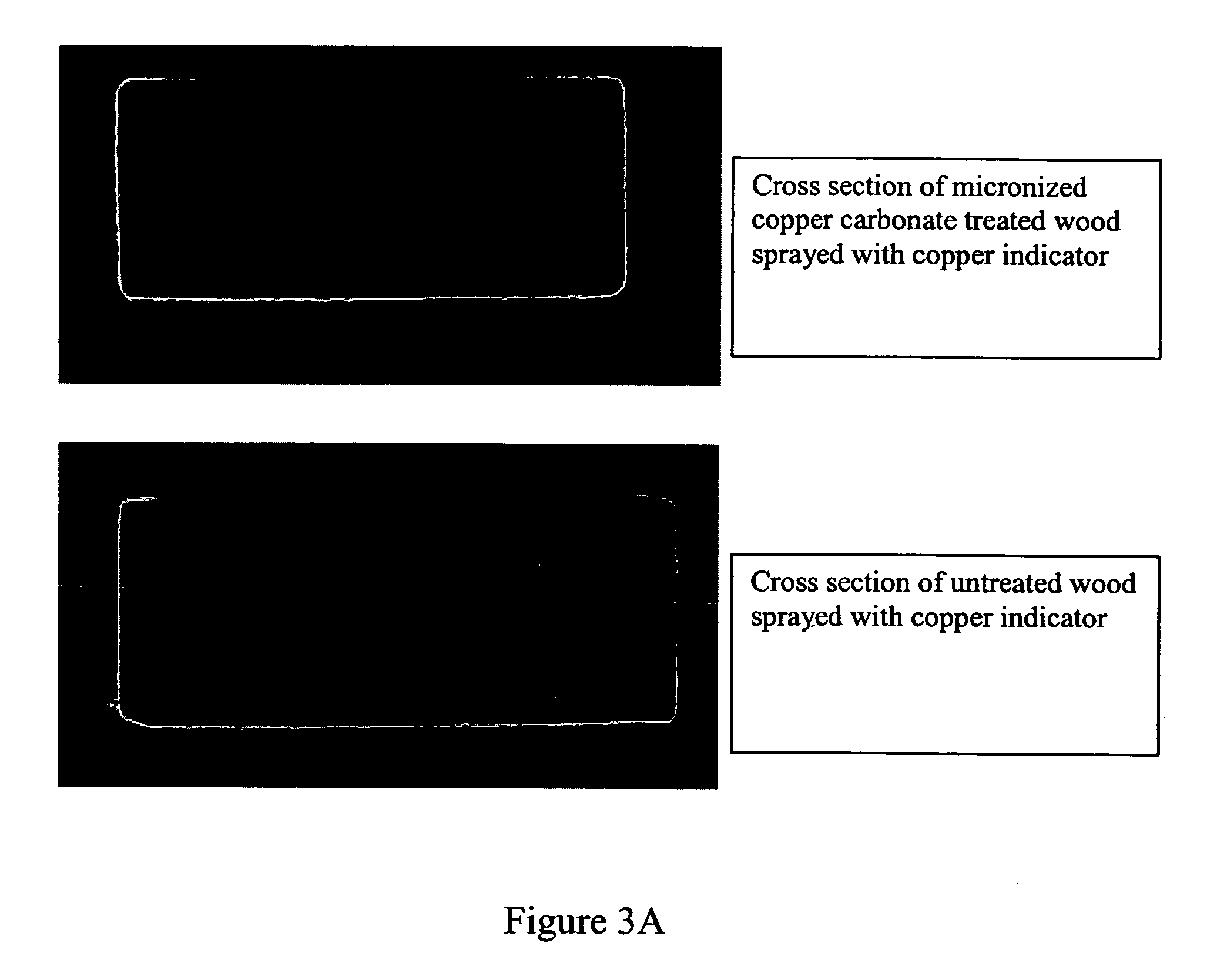Micronized wood preservative compositions
a preservative composition and micro-organism technology, applied in the field of wood preservative compositions, can solve the problem that the protection of small particles from uv light is not the same degree, and achieves the effect of reducing the amount of uv ligh
- Summary
- Abstract
- Description
- Claims
- Application Information
AI Technical Summary
Benefits of technology
Problems solved by technology
Method used
Image
Examples
example 1
[0076] 1000 g wetcake copper carbonate containing about 22% moisture were added to a container containing a mixture of 397.0 grams of water, 120.0 grams of a commercially available modified polyacrylate based dispersant and 3.0 g of a Si-based defoamer. The mixture was mechanically stirred for 5 minutes and then placed in a commercially available grinding media mill. The grinding media was a Zirconium based media with a size of 0.4 to 0.6 mm, ground at 2500 rpm agitation speed. The sample was ground for about 30 minutes, and a stable dispersion containing about 22.3% copper was obtained. The particle size of the copper carbonate dispersion was analyzed by Horiba LA-910 Particle Size Distribution Analyzer (PSDA). The mean particle size was 0.35 micrometers (um) with about 10% greater than 0.5 microns (as in FIG. 5).
example 2
[0077] 1000 g copper carbonate powder were added to a container containing a mixture of 417.0 grams of water, 150.0 grams of a commercially available modified polycarboxylate ether-based dispersant and 3.0 g Si-based defoamer. The mixture was mechanically stirred for 5 minutes and then placed in a commercially available grinding media mill. The grinding media was a Zirconium based media with a size of 0.2 to 0.3 mm, and ground at 2400 rpm agitation speed. The sample was ground for about 25 minutes, and a stable dispersion containing about 21.8% copper was obtained. The particle size of the copper carbonate dispersion was analyzed by Horiba LA-910 Particle Size Distribution Analyzer (PSDA). The mean particle size was 0.376 micrometers (um) with about 15% greater than 0.5 microns (as in FIG. 6).
example 3
[0078] 1000 grams of basic copper carbonate was mixed with 3780 grams of water and 200 grams of modified polycarboxylate ether dispersants. The mixture was mechanically stirred for about 10 minutes. The mixture was then placed in a commercially available grinding mill with grinding media having a size in the range of 0.4 to 0.6 mm and ground at 2600 rpm for about 30 minutes. A stable dispersion containing 25% basic copper carbonate was obtained. The particle size of the copper carbonate dispersion was analyzed by Horiba LA-910 Particle Size Distribution Analyzer (PSDA). The mean particle size was 0.415 micrometers (um) with about 25% greater than 0.5 microns (as in FIG. 7).
PUM
| Property | Measurement | Unit |
|---|---|---|
| diameter | aaaaa | aaaaa |
| diameter | aaaaa | aaaaa |
| weight percent | aaaaa | aaaaa |
Abstract
Description
Claims
Application Information
 Login to View More
Login to View More - R&D
- Intellectual Property
- Life Sciences
- Materials
- Tech Scout
- Unparalleled Data Quality
- Higher Quality Content
- 60% Fewer Hallucinations
Browse by: Latest US Patents, China's latest patents, Technical Efficacy Thesaurus, Application Domain, Technology Topic, Popular Technical Reports.
© 2025 PatSnap. All rights reserved.Legal|Privacy policy|Modern Slavery Act Transparency Statement|Sitemap|About US| Contact US: help@patsnap.com



